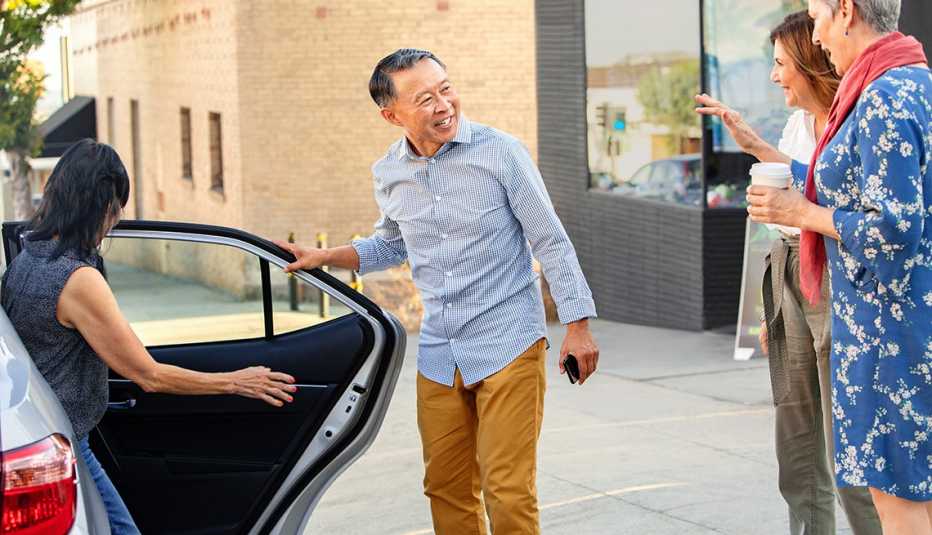Staying Fit


Just a few years ago, older Americans who could no longer drive and needed some assistance with meals and everyday living had to move to an assisted living facility or live with a family member.
Now, thanks to smartphones, apps and other technologies, being an involved and connected long-distance caregiver for an older parent is easier than ever. And the 3 in 4 adults age 50-plus who say they would prefer to age in place have a much better chance of doing just that.


AARP Membership— $12 for your first year when you sign up for Automatic Renewal
Get instant access to members-only products and hundreds of discounts, a free second membership, and a subscription to AARP the Magazine.
Here are some of the new and existing technologies and how they’re helping people who are older — and their caregivers — live fuller, more active lives:
1. Ride-booking apps
“If you can’t drive, you’re sunk,” says David Friend, M.D., managing director of the BDO Center for Healthcare Excellence and Innovation. “You can’t get groceries and can’t live at home.” Uber and Lyft have solved this transportation problem by making rides on demand accessible so many older Americans can get to appointments and stores without depending on public transportation or a friend. But if using those apps is out of your loved ones’ comfort zone, there are concierge services, like GoGoGrandparent, that arrange rides via an 800-number. “They pick up my parents, and I get a text message that my parents have been picked up,” says Friend, who signed up for the service for his 86- and 91-year-old parents to use. “It’s like having a chauffeur — they use it every day, and I know where they are and that they’re safe.”
2. Videoconferencing
Technologies like FaceTime and Skype have long been commonplace in the workplace and for savvy smartphone users, but caregivers are increasingly finding these tools can be key to staying connected from afar. Daily face-to-face interactions with older parents can make it easier to spot subtle changes in physical or mental health that may require extra care. “It’s important to see people,” says Friend, speaking as both a son and a doctor. “You can tell a lot from facial expression.”


3. Telemedicine
With the increase in fitness trackers and the expansion of home-use devices to monitor vital signs, glucose levels and overall wellness, it’s possible to have an appointment with a doctor or nurse without leaving the house. That means less time sitting in waiting rooms for routine visits. “Technology is going to allow your bedroom to become a hospital room — it’s happening incrementally,” says Liddy Manson, director of the AgingWell Hub at Georgetown University’s Global Social Enterprise Initiative, part of the McDonough School of Business.
4. Nutrition tracking
Imagine taking a peek into a relative’s refrigerator to see if they have an ample food supply — from 1,000 miles away. Smart refrigerators that have Wi-Fi-connected cameras (like the Family Hub from Samsung or the upcoming LG InstaView ThinQ) allow caregivers that insight. While these are pricier than regular models (Samsung’s Hub can run $3,500-plus), the ability to have a real-time window into an older adult’s daily nutrition may be worth the additional cost.

































































More From AARP
The Challenges and Joys of Caregiving for a Grown Child With a Disability
How caregivers can manage expectations, prioritize self-care and find the right support network
How to Write ‘The Letter’ to Uncooperative Sibling Caregivers
Make a straightforward appeal for assistance with a loved one
How Technology Can Improve Caregiving
New products allow for more treatment, testing and monitoring from home